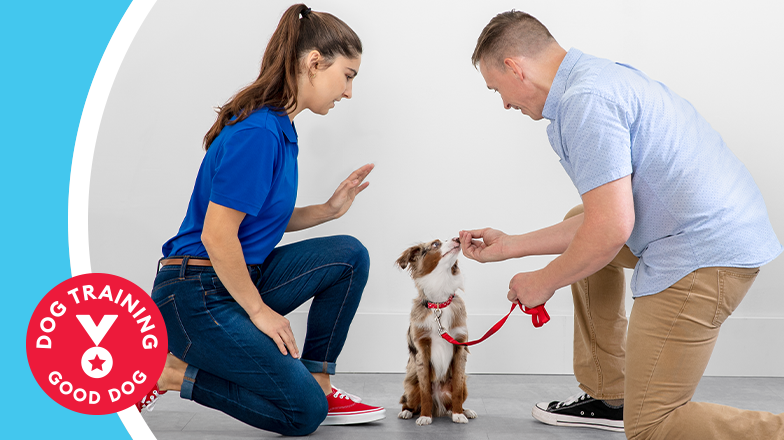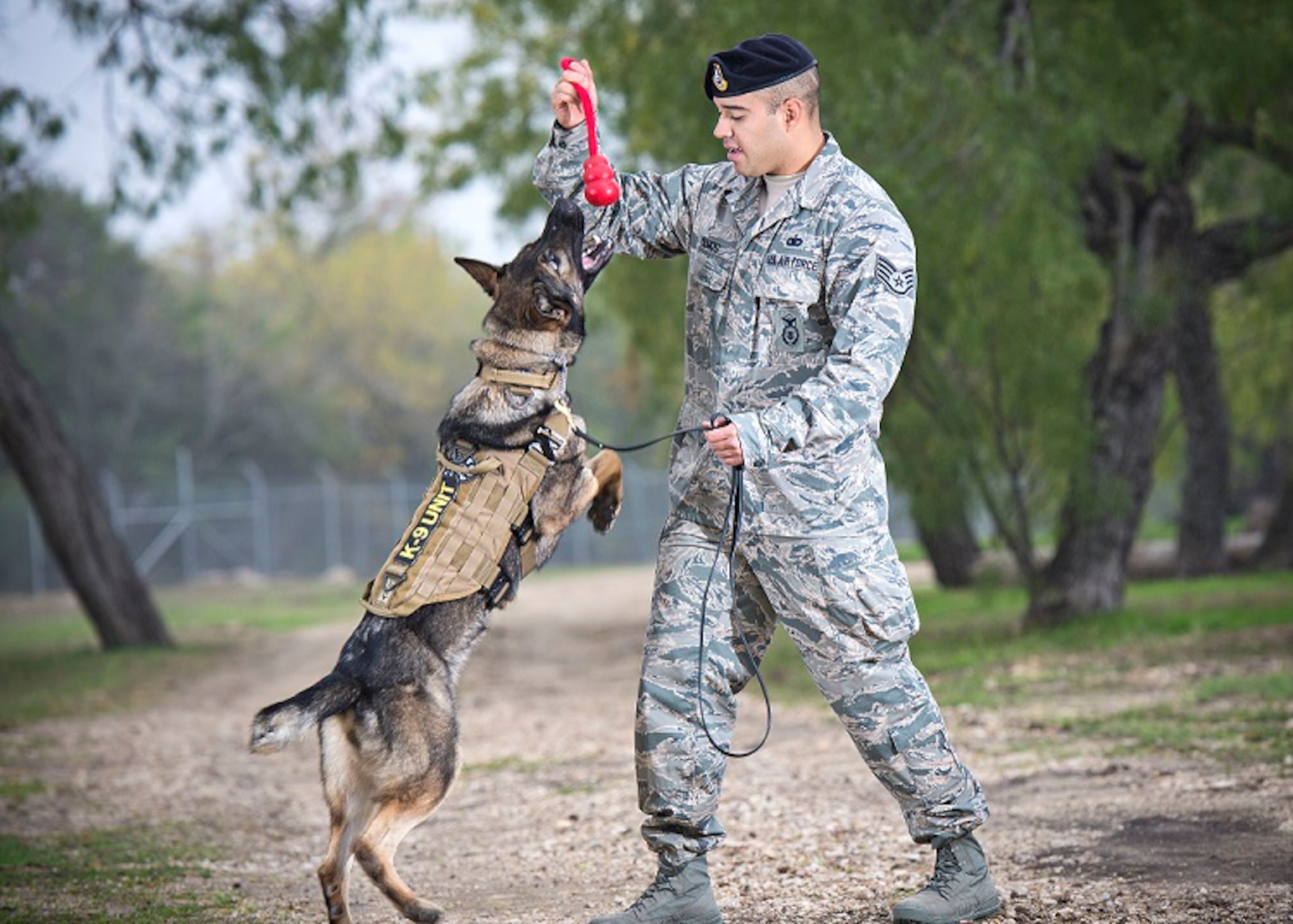Get Results with Puppy Training That Sets the Foundation for a Well-Behaved Dog
Get Results with Puppy Training That Sets the Foundation for a Well-Behaved Dog
Blog Article
Newbie's Guide to Effective Dog Training in the house
Efficiently training a pet at home requires a nuanced understanding of canine habits and effective communication methods. Developing clear training goals, utilizing top notch benefits, and preserving consistency across family members are essential elements. Incorporating training right into everyday regimens can enhance both engagement and retention.
Understanding Pet Habits
Comprehending dog behavior is vital for effective training and fostering an unified relationship between humans and their canine friends - Puppy Training. Canines communicate primarily with body movement, articulations, and facial expressions, making it vital for proprietors to interpret these signals properly. Acknowledging actions such as tail wagging, roaring, or cowering can give insights into a canine's mood and intentions
In addition, comprehending the natural impulses of canines, such as their pack attitude, helps owners establish leadership functions within the family. This is crucial for creating an organized environment where pet dogs feel secure and are a lot more responsive to training. Pet dogs are also influenced by their socializing experiences; early direct exposure to various environments, individuals, and various other animals can substantially form their behavior later in life.
Usual behavioral issues, such as hostility, anxiousness, or too much barking, typically originate from misunderstandings or unmet requirements. Observing and addressing these problems promptly can protect against acceleration and guarantee a favorable training experience. By fostering a deep understanding of dog habits, proprietors can customize their training methods to match their canine buddies, inevitably resulting in a mannerly and satisfied family pet.

Essential Educating Tools
A well-appointed training area can dramatically improve the efficiency of pet training in your home. Necessary training tools ensure that both the pet and the fitness instructor can take part in effective sessions that promote learning and bonding.

Buying a strong chain and a comfortable, well-fitting collar or harness is crucial for safety and control. These devices assist develop borders and ensure the canine remains protected during training. Additionally, a designated training area, totally free from disturbances, help focus for both the pet and the instructor.
Educating help such as training pads, cones, or dexterity tools can also improve the experience by introducing range and challenges. Last but not least, having a notebook or digital app for tracking progress can be important, permitting you to keep in mind successes and areas for enhancement. Utilizing these vital tools will certainly develop a positive training environment and lay the structure for efficient knowing.
Developing an Educating Regimen
Establishing a regular training regimen is vital for effective canine training at home. A well-structured routine not only helps in reinforcing wanted actions however additionally supplies your dog with a complacency and predictability. To develop an efficient training routine, begin by identifying certain training click this goals, such as standard commands, chain walking, or house-training.
Pick a marked time daily for training sessions, ideally when your pet dog is alert and receptive. Procedure should be short, roughly 5 to 15 minutes, to preserve emphasis and protect against tiredness. Uniformity in timing and environment will certainly boost your pet's knowing experience.
Integrate training right into everyday activities to strengthen abilities. Method commands throughout strolls or mealtime, which incorporates discovering into all-natural regimens. In addition, stay versatile and readjust the routine as needed, fitting your pet dog's energy degrees and state of mind.
Favorable Support Techniques

When implementing favorable reinforcement, it is crucial to select rewards that are encouraging for your canine. High-value deals with, such as small items of chicken or cheese, can be specifically efficient during training sessions. In addition, differing the rewards can keep your pet's passion and interest.
Begin with easy commands, like "sit" or "remain," and gradually development to a lot more complex jobs. Uniformity is crucial; guarantee that all household members utilize the same commands and incentive systems to avoid complication.
Additionally, it is important to stay individual and avoid disappointment. Pets, like humans, find out at their own rate. By promoting an encouraging training setting through positive reinforcement, you can enhance your canine's understanding experience while strengthening the bond in between you and your furry friend, preparing for successful training end results.
Usual Educating Difficulties
While training a canine in the house can be a gratifying experience, it usually features a collection of usual challenges that can test both read what he said patience and consistency. One prevalent problem is disturbance. Dogs may end up being quickly averted by noises, motions, or also scents in their environment, making it challenging to maintain their emphasis throughout training sessions.
An additional obstacle is disparity in commands and reinforcement. If family participants make use of various hints or benefits, it can confuse the dog and hinder progression. Establishing a unified method is vital for reliable interaction.
In addition, pet dogs can experience aggravation or anxiety, particularly if they do not comprehend what is anticipated of them. This can result in unfavorable actions, such as barking or chewing.
Lastly, the timing of reinforcement is essential. Delayed rewards can reduce the effectiveness of favorable reinforcement, as pet dogs may fall short to link the behavior with the incentive.
Overcoming these challenges calls for commitment, learn the facts here now clear communication, and a structured training strategy - Puppy Training. Acknowledging and attending to these typical obstacles will certainly lead the method for a much more successful and delightful training experience at home
Final Thought
Finally, successful dog training in your home requires a thorough understanding of canine actions and effective communication strategies. By establishing clear training objectives and utilizing top notch deals with along with favorable support, the training procedure comes to be extra rewarding for both the fitness instructor and the pet dog. Adaptability, uniformity, and persistence are important components that help with learning. Ultimately, incorporating training right into everyday regimens boosts the bond between canine and proprietor, making the experience both productive and delightful.
Establishing a regular training regimen is vital for reliable pet dog training at home.Favorable reinforcement techniques are essential to effective pet dog training, promoting desired habits through benefits rather than penalty. By promoting an encouraging training atmosphere through positive support, you can boost your pet dog's knowing experience while reinforcing the bond in between you and your furry buddy, laying the groundwork for effective training outcomes.
In final thought, effective canine training at home requires a comprehensive understanding of canine habits and reliable communication methods. By developing clear training goals and using high-quality treats along with positive reinforcement, the training procedure becomes a lot more rewarding for both the instructor and the pet dog.
Report this page